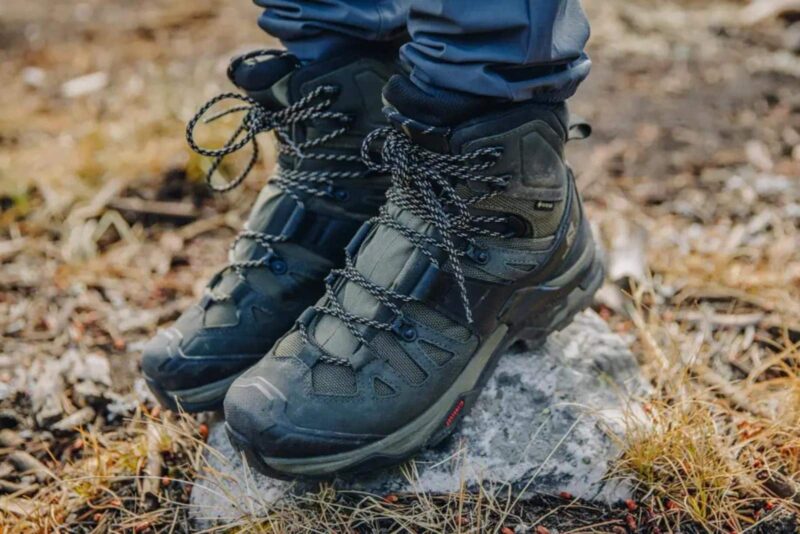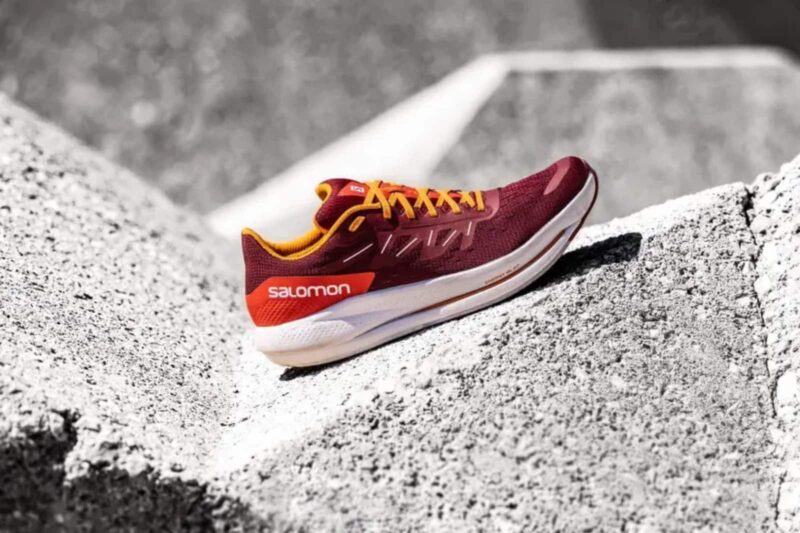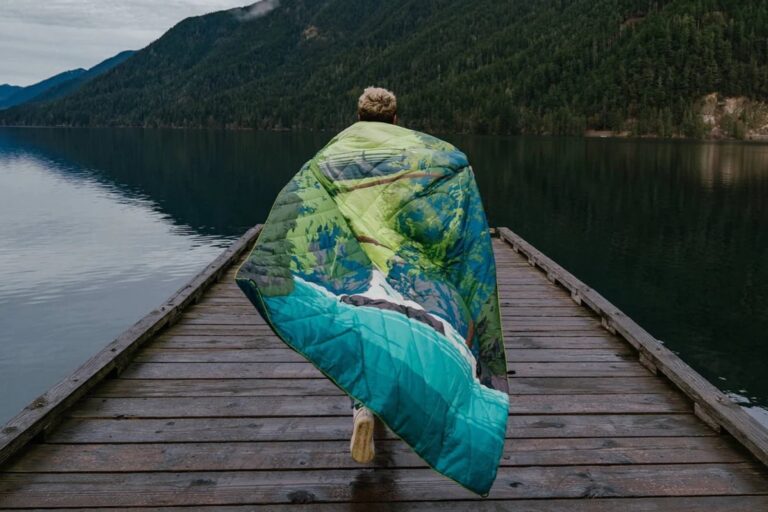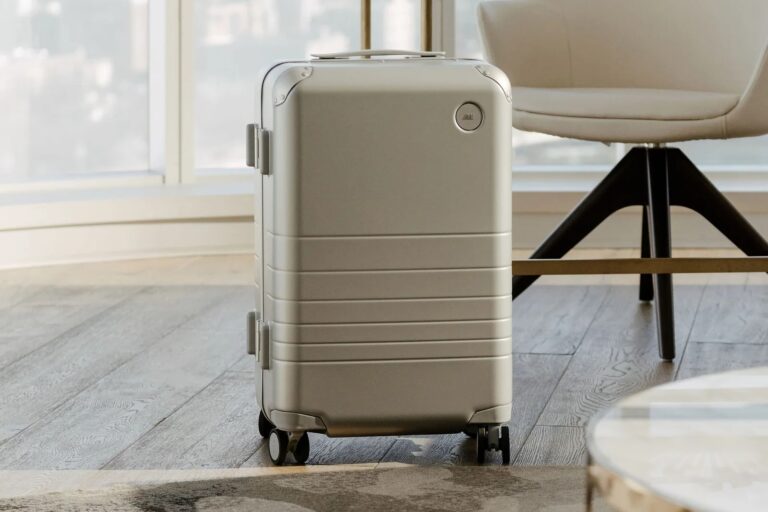Hiking Shoes vs. Boots vs. Trail Runners: The Complete Guide for 2023
[ad_1]
The debate between hiking shoes vs. boots is nothing new. It’s one of those enduring arguments that seems to have been going on forever. You know, like whether skis are better than snowboards and all that (spoiler: They are).
In this complete guide to hiking shoes vs. boots, we’ll run through all the ins and outs of each type of hiking footwear, detailing the pros of those extra uppers, the cons of going light and nimble, and everything in between.
We’ll take a look at what it is we ask of our hiking footwear and compare what gear is better suited to what terrain, finishing off with my two cents on whether it’s hiking boots, hiking shoes, or trail runners that make the cut. Ready? Let’s go…
Before we dive into the debate, let’s take a moment to lay out exactly what it is you’re looking for from hiking footwear in the first place.
Most people agree that there are four main pillars to good hiking footwear:
- Comfort – It’s no coincidence that comfort is top of this list. Hiking boots or hiking shoes, they simply have to be comfortable. It’s non-negotiable because blisters are blisters, no matter if they’re gained on the Pacific Crest thru or during a short day walk in Central Park.
- Protection – The whole reason humans started wearing shoes is to stop rocks and twigs from cutting our feet and to protect our toes from frostbite in winter. A good pair of trail shoes needs to protect your feet from taking a beating on the trail.
- Ankle Support – Good hiking footwear keeps you stable and upright on the trail as well as protected. No one wants a rolled ankle or a pulled Achilles when they’re just trying to get that fix of nature.
Why’s all this important? It’s important because you’re likely to discover that the main debating points in the showdown between hiking boots vs. hiking shoes all revolve around these three key factors. It’s all about varying levels of comfort, protection, and ankle support. Let’s dig deeper…
What Is a Hiking Shoe?
A hiking shoe is a shoe that you wear to hike.
That’s it. Really: That is it!
I’ve been on cross-Dolomite trails with pals in Crocs. I’ve been on snow-covered Scottish Highland routes with folks in the gnarliest new-fangled trail runners.
In that moment, as both Croc and $200 Salomon alike touch the ground, both can be considered hiking shoes.
However, when most people talk about hiking shoes what they’re really talking about are shoes that are specifically designed for the hiking trail. Hiking shoes have a lot of the same features as boots—sturdy construction, protective design, and lots of grip—but have a low-top design without the high ankle collar you find in boots.
It’s also important to highlight the difference between hiking shoes and trail runners.
Trail runners are a relatively new addition to the mix. They’re typically lighter and more flexible, made to navigate hard terrain at speed. Hiking shoes are usually more heavy duty, with a focus on protection over agility.
The Pros of Hiking Shoes
The most obvious advantage of hiking shoes is weight. Hiking shoes are smaller than boots and are less overbuilt, which means that they almost always come in as a whole load lighter than their beefier boot counterparts.
You shouldn’t need to read Tenzing Norgay’s diaries to see why that’s a bonus. You gotta’ shift the weight of what’s on your feet every single time you take a step on the trail. EVERY. SINGLE. TIME.
Let’s think about that for a moment. The basic math is easy to do. A pair of high-quality low hiking shoes might weigh in at about a pound. Meanwhile, a Gore-Tex loaded boot with ankle uppers and 10x lace loops can hit over two pounds.
That’s a lot of weight attached to your feet. Two pounds that you need to lift each time you walk. Over the course of a five-mile hike, that’s two pounds being lifted roughly 10,000 times. Yikes! The upshot here? Opting for a shoe can cut the weight you have to lift by over 1500 lbs over the course of a day, resulting in more energy left for those summit pushes and scrambles.
Many people prefer hiking shoes because they are a great balance: you get a lot of the durability and ruggedness of hiking boots without the extra weight and material that comes with a high top.
Other benefits of using a hiking shoe include:
- Better for traveling – The lightness of hiking boots doesn’t just make them energy efficient on the trail. It also means they won’t take up as much weight or space in your luggage when you jet off on those hiking vacays.
- Breathability – The leathers and materials used on shoes tend to be thinner than on boots, making this type of footwear better for warmer hiking destinations.
- Price – Less materials means lower price points. Of course, there are certain hiking shoes that can demand a second mortgage. But generally, these products are cheaper than full-on boots.
The Cons of Hiking Shoes
Naturally, there’s a downside to stripping away all those leather uppers and whatnot. Otherwise boots surely wouldn’t exist. Sure enough, shoes do cut down the level of protection you get on the trail.
You’ll be able to move more nimbly and hike for longer. But you will have exposed ankles, openings that can potentially let in snow and scree, and thinner soles that might not work as well on rugged terrain.
I hate smashing my ankles on rocks and getting snow and dirt down my shoe. Hiking shoes definitely aren’t as good as boots when it comes to ankle protection and keeping debris out.
Hiking Shoe Recommendations
North Face Hedgehog Fastpack II
This sturdy hiking shoe features a rugged Vibram outsole, waterproof leather upper, and heavy-duty cushioning. It is protective, tough, and ready for pretty much anything you throw at it.
The downside? It’s a bit heavy compared to many other trail shoes. The waterproofness also means it isn’t super breathable, so I wouldn’t recommend it for hot weather.
Salomon Outrise
The Salomon Outrise is an extremely well-designed shoe that offers a great ballance between protection and weight. It is stable, but still moderately flexible. It’s grippy, but still has a smooth ride on easier trails.
It’s not the absolute best at everything, but the Outrise is a solid all-around shoe for hiking.
Be aware that Salomon shoes run pretty narrow. If you have wider feet or just like having more wiggle room, this isn’t the shoe for your.
Keen Venture
This burly trail shoe looks like a full-on boot without the high-rise ankle collar. It’s protective, comfy, and extremely durable. I love Keen shoes and boots because they offer a nice wide toe box that gives your feet extra wiggle room on long hikes.
What Is a Hiking Boot?

Boots are basically bigger shoes. (Please, stop us if this is getting too complicated!)
They usually have all the features that hiking shoes have, only with added extras and bulk on top.
Said extras might include thick leather uppers to add support to the lower leg, lugged soles for increased grip, and strong shanks built into the lower of the shoe for sturdiness.
There’s a wide range of different types of boot within the greater boot category, too.
At the lower end of the spectrum, you get hill walkers. These are built for the casual, weekend rambler. They tend to have chunky soles and good water resistance.
Pricier options include 100% waterproof hiking boots with fancy tech for going moderate distances. Then there are the more advanced alpine mountaineering boots made by brands like Salomon and Scarpa, constructed for hardcore high-altitude expeditions to Khumbu and beyond.
The Pros of Hiking Boots
Hiking boots are all about homing in on two of the three main pillars of hiking footwear: Protection and support.
The former is where they really shine. Yes, you’re carrying around a lot of extra weight, but that means there is more between you and the elements. Hiking boots offer great ankle support, underfoot protection, and stability over rocky terrain. A sturdy hiking boot can really feel like your foot is in a tank.
That’s why – and I’ll touch on this in more depth later on – boots are the better choice for harder hiking trips and winter hiking. They’ve got the bulk and the beef to do battle with sub-zero temps, snow drifts, and trails with multiple terrain types.
And there are some more benefits to picking hiking boots:
- Longer lasting – With their thick, rubber soles and heavy-duty uppers, a good hiking boot will almost always outlive lighter weight shoes.
- Waterproofness – while there are waterproof hiking shoes and trail runners out there, waterproof boots just make a lot more sense with their high ankle collar that helps to keep water out.
- Compatibility with crampons – There are many more boots on the market that have compatibility with crampons than there are shoes. They’re a must if you’re planning on long treks above the snowline.
The Cons of Hiking Boots
Hiking boots are to hikers what front lawns are to suburban homeowners. Insult them and things can get personal fast.
Traditionalist-leaning hikers are defensive of their footwear choice, but there’s no getting around the fact that boots have some downsides. They are heavier, so they use more of your energy on the trail. The stiff, overbuilt design of most backpacking boots makes them much more likely to cause blisters. They are also less breathable, which can lead to sweaty, uncomfortable feet on warmer days.
Big high-top leather boots were all the rage in the 80s and 90s because they were touted as a way to counter rolled ankles. More recent research has shown that ankle uppers might actually increase the risk of rolling. But hey, perms were cool in the 80s, too.
Oh, and they’re pricier – a good pair of hiking boots will always be noticeably more expensive than an equivalent low-top shoe.
Hiking Boot Recommendations
Keen Targhee III
The Keen Targhee is one of the most iconic hiking boots on the trail. This is a boot that will last a lifetime and still be as comfortable as the day you bought it. It’s tough, but not overly heavy.
With this mid-rise boot, you don’t have as much restriction as with a full high-top, but you still get the added ankle protection, which is a huge plus.
Merrell Moab 3 Mid
Merrell builds some of the best hiking footwear out there, and the Moab 3 is there most popular boot. It is tough, waterproof, and just looks rugged.
The grip isn’t as good as some other boots and trail runners, but it should be plenty for most trails.
Danner Mountain 600
If you want that classic leather boot style while still getting the modern performance innovations packed in, the Danner Mountain 600 is your best bet.
This full leather boot looks amazing and doesn’t skip on trail-ready construction. With a Vibram outsole, cushy midsole, and dialed-in fit, you’ll be ready for long-haul treks.
What Are Trail Runners?

You will have noticed me mentioning trail running shoes here. Remember we said that they’re among the most lightweight hiking shoes out there? Well, that’s because this sort of footwear entered the market for the sole purpose of crossing rocky terrain and technical terrain at speed.
Now, before you start wincing at the thought of jogging to the top of Pikes Peak on an 84-degree August day, trail running shoes are not just good for running. Nowadays they are one of the best alternatives to hiking boots and hiking shoes on the market. In fact, trail runners are by far the most popular footwear option on the Appalachian Trail and other long thru-hike routes.
You see, they’re not just for the nut jobs that do up-and-backs to the Ben Nevis summit before their porridge oats in the morning. They’re for everyone and everything – casual day hiking, dedicated thru hikers, week-long hikes from pass to pass.
Let’s take a closer look at why trail runners are now being touted all over as some of the best hiking shoes. Period.
The Pros of Trail Runners
Cutting down on weight is a huge reason to go for a trail runner over a hiking boot. These nifty little numbers can clock up less than half a pound per foot. That’s marshmallow light. It’s like walking on clouds. You’ll be able to don a pair of these, walk 20 miles over 6,000 feet of vert gain, and not even remember that you’ve got footwear on. Seriously, I’ve done it.
Then there’s that comfort aspect – I told you we’d get to it! This is where trail running shoes have really started blowing most hiking shoes and hiking boots out of the water. They are cushioned, flexible, breathable, and just plain comfy.
Finally, most trail runners really excel when it comes to grip.
Go pick up a trail running shoe in the shop. Flip it over. Notice the ridiculously grippy outsole, invariably made up of thick lugs that can poke half an inch or more from the base. They’re almost always larger than the lugs on classic hiking boots and have been specifically designed to master uneven terrain, boulders, scree, and rocky ground, even while running.
Below are a few more ticks in the plus column for going the trail running route…
- Short break-in period – While many heavy mountaineering boots need months to feel comfortable, and some never do, a trail runner’s lightness means that it can sometimes feel like an extension of your leg after the first 10 miles.
- Hot weather conditions – The lightness of trail runners is often achieved by using mesh components and thin fabrics not seen on hiking boots. That makes these prime for keeping you cool throughout the day, from start to finish.
The Cons of Trail Runners
From all the above, it might seem like we’re zealous apologists for trail running. Like we’re going to knock on your door and ask if you have five minutes to discuss the newfound Order of Trail Running Folk, and if you don’t then woe to thee.
Not quite.
There are downsides to picking a trail runner over burlier hiking boots and shoes.
The most obvious one is that they lack support.
That’s sort of the point, though. These shoes are designed for moving quickly, so the focus is inevitably on lighter weight while sacrificing stiffer soles, rugged metal hardware, and solid ankle support.
There’s also a question mark over the ability of trail running shoes to manage wet conditions and cold conditions. They certainly can’t do that as well as thicker, heavy hiking boots, and often come with zero insulation.
Trail Runner Recommendations
Altra Lone Peak 7
This is our top pick for the best trail runner for hiking. It is lightweight, protective, and has a wide toe box that’s designed to let your foot spread and move naturally. Trust me, after long days on the trail, this makes a huge difference.
Arc’teryx Norvan LD 3
The “LD” in the name of this shoe stands for long distance, and these shoes have plenty of support, cushion, and grip for long-distance hiking. They also are lightweight, meaning you’ll be using less energy on your hike.
Salomon Speedcross 6 Gore-Tex
If you’re heading out on technical trails, muddy conditions, or wet weather, these ultra-grippy waterproof running shoes are a fantastic choice. They are lightweight and have massive lugs on the bottom for the most traction possible on loose surfaces.
Hiking Boots vs. Hiking Shoes vs. Trail Runners
The truth is that most serious hikers will own both hiking boots and shoes that shine in different situations.
That’s because there will always be certain conditions and particular hiking routes that are better suited to a shoe over a boot, and vice versa. So, it stands to reason that you should cover all bases with your footwear arsenal if possible.
When things get spicy is when you can only pick one.
Our advice? Go with a low-top hiking shoe or trail runner rather than heavy hiking boots. Here’s why…
Shoes are the most versatile option. They manage to nail down good levels of foot protection while also staying light and airy. They work well for everything from a quick day hike to long-haul backpacking trips..
On top of all that, a decent hiking shoe or runner can be used in a whole kaleidoscope of situations. I’ve taken my trusty Salomons trail runner shoes to the Polish Tatras in the spring, the Southern Alps of New Zealand in a snowy fall, and the Moroccan Atlas in midsummer. They worked a charm in all of the above.
Of course, hiking boots really come into their own when you are looking at adventures in winter weather or over snowy, icy terrain. Before buying, it might be worth having a quick think about where and in what season you plan on going outdoors. Those are the considerations that are likely to have the most effect on whether you choose a lighter option or big, sturdy hiking boots.
[ad_2]
Source link













![Backpack Statistics [2024]: Consumer, Product & Growth Data](https://fastsecuretravels.com/wp-content/uploads/2024/03/peak-design-everyday-1200x800-768x512.jpg)

![Luggage Statistics [2024]: Consumer, Product & Growth Data](https://fastsecuretravels.com/wp-content/uploads/2024/03/best-wheeled-luggage-768x512.jpg)
![Booking.com Statistics [2024]: Company & Growth Data Analysis](https://fastsecuretravels.com/wp-content/uploads/2024/03/joshua-tree-hotel-paseo-768x536.jpeg)